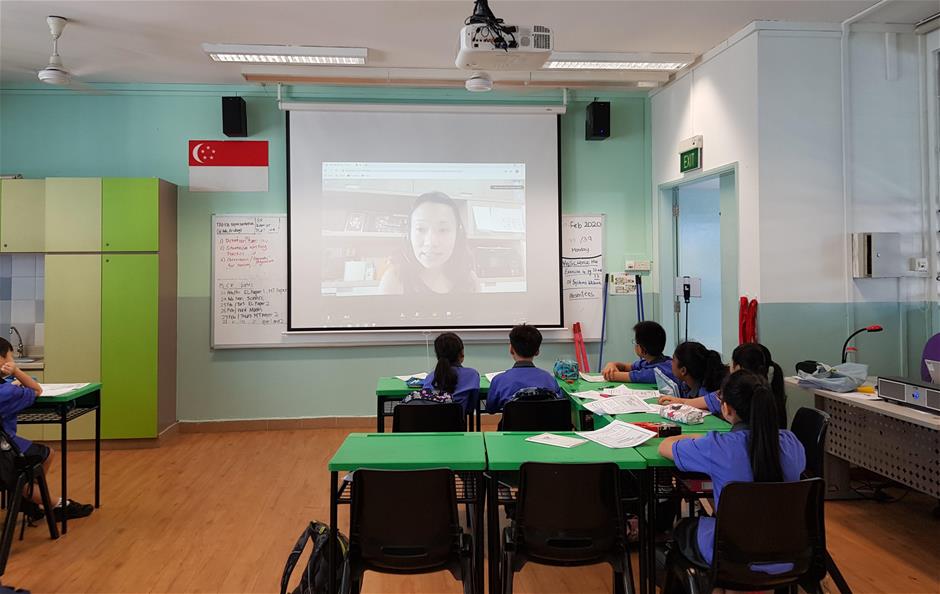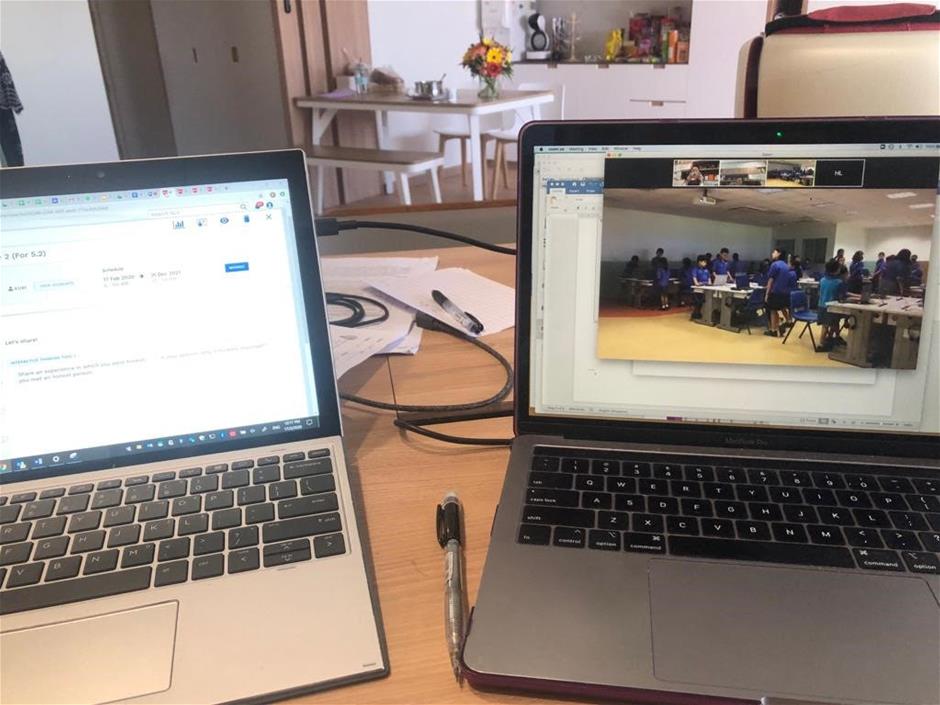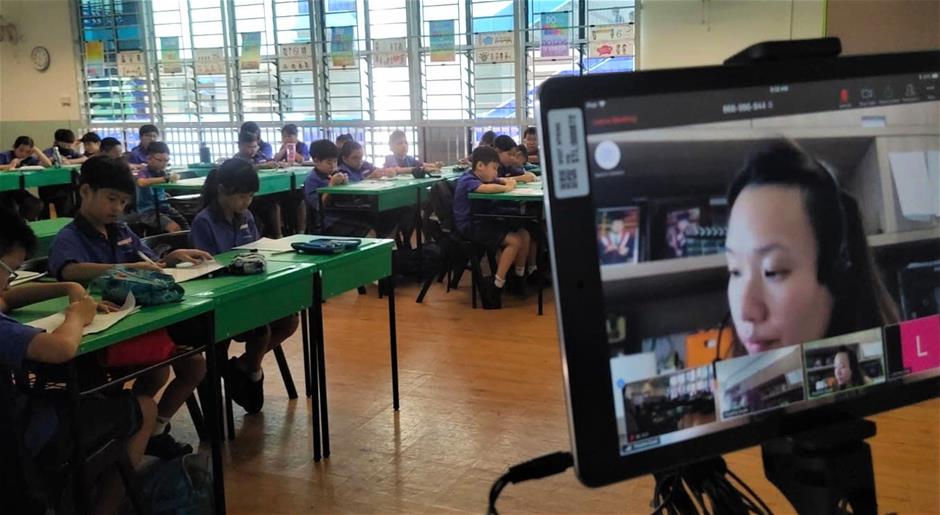Teachers are familiar (or even overly familiar) with the concept of ‘working from home’.
However, that usually applies to marking or lesson-planning.
After all, teachers have to be in school to conduct lessons right?
When a teacher cannot be in school for various reasons, a relief teacher is usually deployed. Today, most schools have a system in place for teachers to leave instructions and materials for relief teachers. This is to minimise disruption, so students can continue to learn under the supervision of an adult.
However, no amount of preparation can be as effective as having the real subject teacher in class to conduct a lesson. This was what got Mrs Pauline Soh, a teacher in West Spring Primary School, thinking when she was unexpectedly placed on Leave of Absence (LOA) in mid-February.
Pauline understood the rationale for the LOA, but she was worried because she would be away for a total of six school days (plus weekends). Her Primary 5 English class also had a test scheduled for the week right after her LOA.
Pauline was determined not to let this setback disrupt her plans, or her students’ learning. As Head of Department for Infocomm Technology (ICT) in her school, she felt that technology had a solution for her.
“I really wanted to do the lesson myself,” Pauline shared. “I decided to see this as an opportunity to challenge the way we design e-learning experiences for our students.”
Her principal, Mrs Jacinta Lim, was also happy to support her initiative.
“It is a chance for us to creatively leverage on technology to arrive at a win-win situation,” Mrs Lim, Principal, West Spring Primary School, commented. “Pauline got to continue teaching while she was away, and her students were not short-changed in their learning.”
What teaching from home looked like
With Mrs Lim’s support, Pauline started planning her lesson from home.
The main tool that she tried was Zoom, a remote conferencing platform.
 Zoom allowed Pauline to conduct lessons from home.
Zoom allowed Pauline to conduct lessons from home.
Using Zoom, she was able to conduct her lesson at home in front of a camera, and her students could see and hear her instructions in real time through the screen in the classroom. For some of the lessons, students also went to the computer lab and used the laptops there to access the Student Learning Space (SLS), an online learning portal launched by the Ministry of Education in 2018.
One of the lessons, for example, was for students to generate ideas for their composition. After Pauline introduced the topic and gave them a few prompts, students typed and shared their ideas with the class in SLS. After gathering their responses, Pauline was able to facilitate the discussion and give feedback to help students refine their ideas over Zoom.
 Pauline was able to observe how her class was behaving and also see their responses from home.
Pauline was able to observe how her class was behaving and also see their responses from home.
For another lesson, the class practised the skill of picking out the main points in a text for English comprehension. With the video function, Pauline could annotate and comment on the text for her students and demonstrate the technique visually.
“It was quite a lot of work to plan and put the lesson together, but I thought it was quite effective,” she reflected. “In fact, with technology, I was able to capture all their responses very quickly. Without any ICT tools, it would have been challenging to get every single student to respond in class.”
It also helped that she had an experienced ICT trainer in the classroom, who was able to help set up the IT equipment, supervise the students and troubleshoot issues during the lesson. In all, she conducted six lessons remotely.
Responses from the students
Pauline felt that the students took to the new way of teaching rather quickly. They were largely on task and managed to complete their work with minimal problems. She reflected that this was because the students were no strangers to the use of technology in class – she already had routines in place for online-learning and her students were familiar with the use of SLS.
Jovan Tan, a student in the English class, said, “I like it that even when Mrs Soh could not be in school, we could still continue learning with her. It was interesting that we could see Mrs Soh and she was able to use our responses on SLS to give us feedback.”
Of course, while video-conferencing helped Pauline continue with her lessons, learning from a screen still presented a barrier.
As another student, Ashley Koh reflected, “I still prefer having face-to-face interaction. I miss the personal touch when Mrs Soh teaches us in class.”
Pauline also maintains that there is a limit to what technology can do.
“I missed being able to touch base with the students,” she said. “Yes we can give instructions and feedback using technology, but you don’t really experience the warmth of speaking to them directly.”
Through this experiment in remote teaching, Pauline felt that she can better plan for home-based learning in the future. The use of the video conferencing platform, combined with the activities in SLS, presented her with many new possibilities she could share with her fellow teachers.
For now, she is happy to be back in the classroom.






